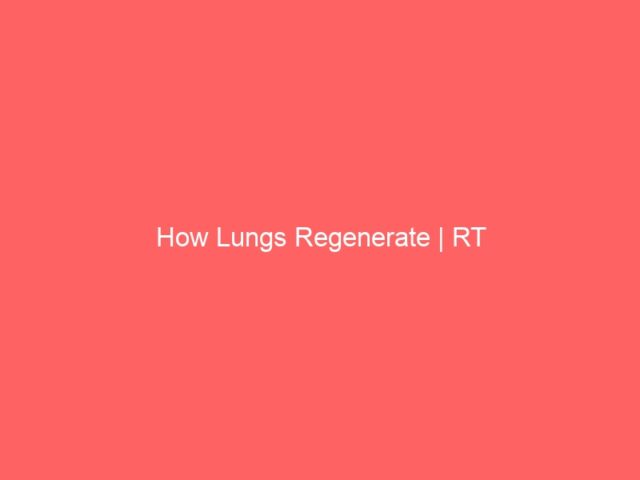Lung cells have a molecular “change” that determines whether or not they deal with repairing tissue, or combating an infection.
RT’s Three Key Takeaways:
- Molecular Restore Swap Recognized – Mayo Clinic researchers found a molecular “change” in lung cells that determines whether or not they deal with repairing tissue or combating an infection, providing perception into why regeneration usually fails in power lung illnesses.
- Key Regulators of Lung Regeneration – The research discovered that the C/EBPα protein acts as a clamp suppressing stem cell exercise in alveolar kind 2 (AT2) cells, and releasing this clamp after damage is important for correct lung restore.
- Pathway to Regenerative Therapies – These findings open new avenues for medicine that improve pure lung restore and stop fibrosis or organ failure, supporting Mayo Clinic’s broader efforts in early illness detection and regenerative drugs.
Mayo Clinic researchers have recognized a molecular “change” in lung cells that helps them determine when to restore tissue and when to struggle an infection. This discovery may information future regenerative therapies for power lung illnesses.
“We had been stunned to search out that these specialised cells can not do each jobs directly,” says Douglas Brownfield, Ph.D., senior creator of the research, revealed in Nature Communications. “Some decide to rebuilding, whereas others deal with protection. That division of labor is important. And by uncovering the change that controls it, we will begin occupied with find out how to restore steadiness when it breaks down in illness.”
How Lung Cells Stability Restore and Protection
The brand new analysis facilities on alveolar kind 2 (AT2) cells, specialised cells that each defend the lungs and function backup stem cells. These cells produce proteins that preserve air sacs open for respiration, however they will additionally regenerate the skinny alveolar kind 1 (AT1) cells that type the floor for oxygen alternate.
For many years, scientists have identified that these cells usually fail to regenerate correctly in lung illnesses comparable to pulmonary fibrosis, power obstructive pulmonary illness (COPD) and extreme viral infections like COVID-19. What remained unclear was how AT2 cells lose their stem cell capability.
Utilizing single-cell sequencing, imaging and preclinical damage fashions, the workforce mapped the developmental “life historical past” of AT2 cells. They discovered that newly shaped AT2 cells keep versatile for about one to 2 weeks after start earlier than “locking in” to their specialised id.
That timing is managed by a molecular circuit involving three key regulators known as PRC2, C/EBPα, and DLK1. The researchers confirmed that certainly one of them, C/EBPα, acts like a clamp that suppresses stem cell exercise. In grownup lungs, AT2 cells should launch this clamp after damage to regenerate.
The identical molecular change additionally directs whether or not AT2 cells restore lung tissue or defend in opposition to an infection. That helps clarify why infections usually sluggish restoration from lung illness.
“Once we take into consideration lung restore, it’s not nearly turning issues on — it’s about eradicating the clamps that usually preserve these cells from performing like stem cells,” says Dr. Brownfield. “We found a kind of clamps and the way it instances the power of those cells to restore.”
Stopping Organ Failure
The discoveries spotlight potential new targets for regenerative drugs. Medication designed to regulate the C/EBPα, for instance, may assist AT2 cells rebuild lung tissue extra successfully or cut back scarring in pulmonary fibrosis.
“This analysis brings us nearer to with the ability to enhance the lung’s pure restore mechanisms, providing hope for stopping or reversing circumstances the place presently we will solely sluggish development,” says Dr. Brownfield.
The findings additionally might information earlier detection, serving to clinicians determine when AT2 cells are caught in a single state and unable to regenerate. Such insights may result in new biomarkers for lung illness. This work aligns with Mayo Clinic’s Precure initiative, which focuses on detecting illness at its earliest phases — when interventions are handiest — and stopping development earlier than organ failure happens.
On the identical time, the analysis advances Mayo Clinic’s Genesis initiative, which goals to forestall organ failure and restore operate by means of regenerative drugs. The workforce is now testing methods to take away the repressive clamp on human AT2 cells, increase them in tradition and doubtlessly use them for cell alternative remedy.













